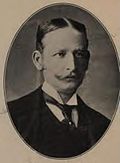City of London (UK Parliament constituency)
[2] In other directions a web of tiny liberties and parishes of diverse size adjoined from medieval times until the 20th century.Previous to 1298 from the middle of that century, the intermittent first parliaments, the area's households, officially, could turn to their Middlesex "two knights of the shire" – two members of the Commons – as to their interests in Parliament as the City formed part of the geographic county yet from early times wielded independent administration, its corporation.Before the Reform Act 1832 the composition of the City electorate was not as democratic as that of some other borough constituencies, such as neighbouring Westminster.However the City authorities did not want to extend their jurisdiction beyond the traditional "square mile" so the constituency was left unchanged as its resident population fell.The pre-1900 heavily subdivided city became simplified for the period 1907 and 1965 into one civil parish, before in that year this level of local government complication was taken away.Sources: The results are based on the History of Parliament Trust's volumes on the House of Commons in various periods from 1715 to 1820, Stooks Smith from 1820 until 1832 and Craig from 1832.Dates of general and by-elections from 1660 to 1715 (excluding general elections at which no new MP was returned) 1720s – 1730s – 1740s – 1750s – 1760s – 1770s – 1780s – 1790s 1810s – 1820s – 1830s – 1840s – 1850s – 1860s – 1870s – 1880s In 1868 the limited vote was introduced, which restricted an individual elector to using one, two or three votes, in elections of the City of London's four MPs.







borough constituencyHouse of CommonsCities of London and WestminsterUnited KingdomparliamentaryconstituencyParliament of EnglandParliament of Great BritainParliament of the United KingdomCity of LondonGreater LondonParliamentary Boundaries Act 1832The TempleThamesWestminsterHolborn divisionFinsbury divisionTower divisionMiddlesexReform Act 1832Livery CompaniesNamierplural voterRepresentation of the People Act 1948under-sized in electoraterotten and pocket boroughsCity of WestminsterCity of London (elections to the Parliament of England)William WithersJohn WardRichard HoareGeorge NewlandJohn CassRobert HeyshamPeter GodfreyThomas ScawenRichard LockwoodSir John BarnardFrancis ChildRichard HopkinsSir John Eyles, BtMicajah PerryHumphry ParsonsRobert WillimotGeorge HeathcoteWilliam CalvertSlingsby BethellStephen JanssenRobert LadbrokeWilliam BeckfordSir Richard GlynThomas HarleyBarlow TrecothickRichard OliverFrederick BullJohn SawbridgeGeorge HayleyJohn KirkmanWatkin LewesBrook WatsonSir William CurtisSir John Anderson, BtWilliam LushingtonHarvey Christian CombeSir William Curtis, BtSir Charles PriceSir James Shaw, BtJohn AtkinsSir Matthew Wood, BtThomas WilsonRobert WaithmanGeorge BridgesWilliam ThompsonLiberalWilliam WardGeorge GroteRadicalSir John Key, BtGeorge LyallConservativeWilliam CrawfordJames PattisonJohn MastermanLord John RussellBaron Lionel de RothschildSir James Duke, BtRobert Wigram CrawfordWestern WoodGeorge GoschenWilliam LawrenceCharles Bell1869 by-electionWilliam CottonJohn HubbardSir Robert Fowler, BtRobert FowlerThomas Charles BaringHucks GibbsSir Reginald Hanson, BtAlban GibbsJoseph DimsdaleEdward ClarkeFeb 1906 by-electionArthur BalfourJun 1906 by-electionSir Frederick Banbury, BtCoalition Conservative1922 by-electionEdward Grenfell1924 by-electionSir Vansittart Bowater, Bt1935 by-electionAlan Anderson1938 by-electionSir George Broadbridge, Bt1940 by-electionAndrew DuncanNational1945 by-electionRalph Asshetonbloc votinglimited voteby-electionsfirst past the postGeneral election 1713General election 29 January 1715